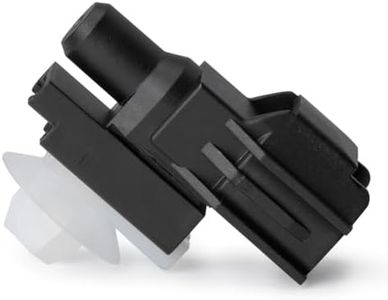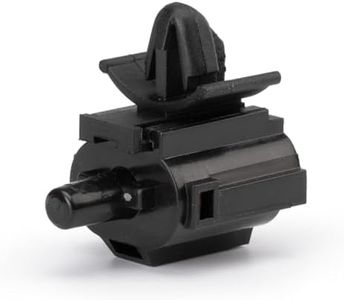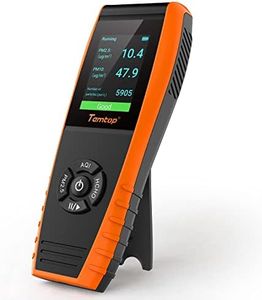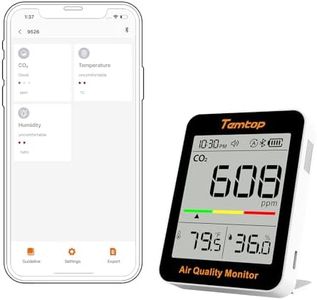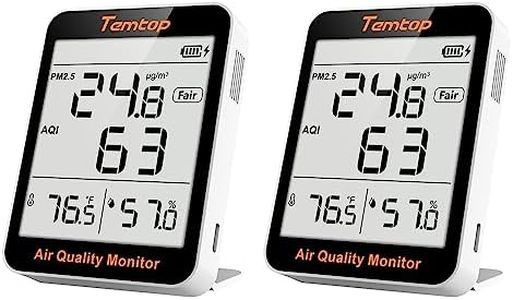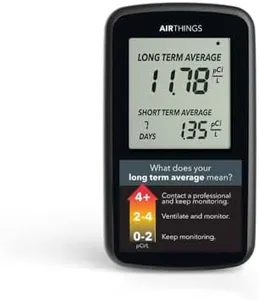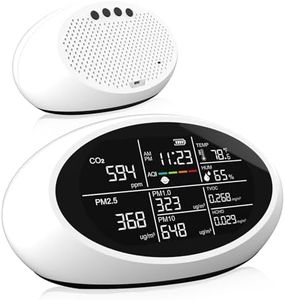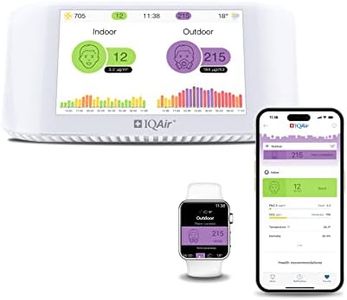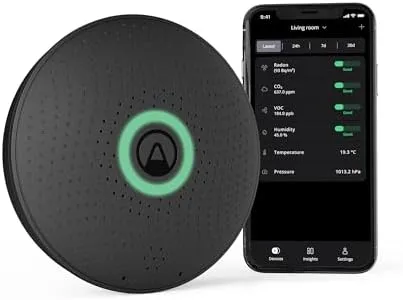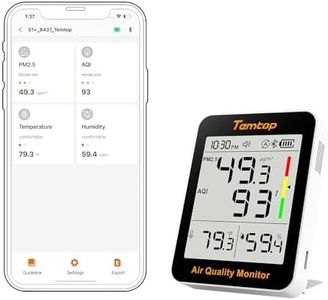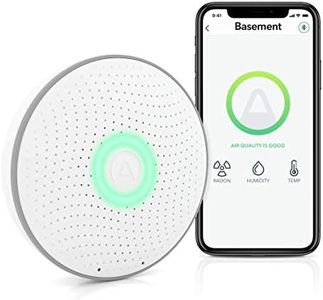10 Best Air Quality Detectors 2025 in the United States
Our technology thoroughly searches through the online shopping world, reviewing hundreds of sites. We then process and analyze this information, updating in real-time to bring you the latest top-rated products. This way, you always get the best and most current options available.

Our Top Picks
Winner
Amazon Smart Air Quality Monitor – Know your air, Works with Alexa
Most important from
4934 reviews
The Amazon Smart Air Quality Monitor is designed for those who want to keep an eye on their indoor air quality effortlessly. It tracks five key factors: particulate matter (PM 2.5), volatile organic compounds (VOCs), carbon monoxide (CO), humidity, and temperature, making it a comprehensive option for home monitoring.
The color-coded LED and Alexa app provide clear and easy-to-understand updates on air quality, which is a user-friendly feature, especially for non-tech-savvy individuals. Notifications and announcements via Echo devices ensure that users are promptly informed about poor air quality, adding an extra layer of convenience and safety.
The ability to integrate with Alexa-enabled devices and set up routines to control air purifiers, dehumidifiers, and fans is a significant advantage for maintaining optimal indoor conditions effortlessly. However, the accuracy of the sensors has some limitations, with a ±20 µg/m³ or ±20% margin for PM 2.5 and ±30% for CO, which might not be sufficient for users requiring highly precise measurements. The device is powered by a micro-USB cable, which is standard but may limit portability. The compact size and lightweight design at 120 grams make it easy to place anywhere indoors. While the device is simple to set up and use, it requires a compatible Echo device and a recent Alexa app version, which might be a constraint for some users. The Amazon Smart Air Quality Monitor is well-suited for households looking for an easy-to-use, integrated solution to keep track of their air quality.
Most important from
4934 reviews
Airthings 2960 View Plus - Battery Powered Radon & Air Quality Monitor (PM, CO2, VOC, Humidity, Temp, Pressure)
Most important from
1509 reviews
The Airthings 2960 View Plus is a battery-powered air quality monitor that excels in measuring various pollutants, including radon, PM2.5, CO2, VOCs, humidity, temperature, and air pressure. Its continuous monitoring capabilities and Wi-Fi connectivity allow users to check real-time data and receive alerts through the Airthings app, making it user-friendly for those wanting to enhance their indoor air quality. The monitor’s accuracy, especially for radon detection, is a significant strength, given the serious health risks associated with radon exposure.
A standout feature is its long battery life, lasting about two years, which means less hassle with frequent replacements. The design is cable-free and portable, allowing for easy placement in any room. Additionally, the customizable eInk display provides a calm and minimalistic look.
However, there are a few drawbacks to consider. The requirement of the Airthings app and internet access for full functionality may not appeal to everyone, especially those who prefer standalone devices. Some users may also find the need for registration and account creation to be an unnecessary step. While the monitor is generally reliable, users should be aware that its performance can vary slightly based on environmental conditions. The warranty is a positive aspect, offering a five-year extended coverage option, providing peace of mind for consumers. The Airthings 2960 View Plus is particularly suitable for health-conscious individuals and families looking to monitor air quality proactively, though it may not appeal to those seeking a simple plug-and-play device without the need for an app or Wi-Fi.
Most important from
1509 reviews
Airthings Corentium Home Radon Detector 223 Portable, Lightweight, Easy-to-Use, (3) AAA Battery Operated, USA Version, pCi/L
Most important from
10344 reviews
The Airthings Corentium Home Radon Detector is a solid choice for anyone concerned about indoor air quality, particularly radon levels. One of its key strengths is its portability; being battery-operated means you can use it anywhere in your home without needing to find an outlet. This feature is especially useful for long-term monitoring, as radon levels can vary significantly over time, and having a device that you can easily move around allows for more comprehensive tracking.
In terms of accuracy and sensitivity, the Corentium provides reliable readings for both short and long-term exposure to radon gas, which is crucial for understanding potential health risks. The on-screen display offers quick access to these readings, making it user-friendly, even for those less tech-savvy.
There are some drawbacks to consider. The device is specifically designed to detect radon, which means it won't monitor other pollutants that could be affecting your indoor air quality. Additionally, while the use of batteries enhances portability, users must stay mindful of battery life and ensure they replace the AAA batteries regularly to maintain functionality. Furthermore, while it can generate radon self-inspection reports, it lacks advanced connectivity features like smartphone integration or alerts, which could add to its usability for some users.
Most important from
10344 reviews
Buying Guide for the Best Air Quality Detectors
Air quality detectors are essential devices that help you monitor the quality of the air in your home or workplace. They can detect various pollutants and provide you with real-time data, allowing you to take necessary actions to improve air quality. When choosing an air quality detector, it's important to consider several key specifications to ensure you select the best one for your needs.FAQ
Most Popular Categories Right Now
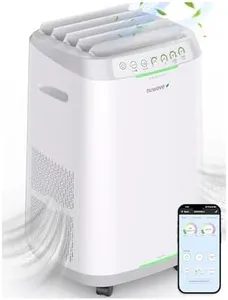

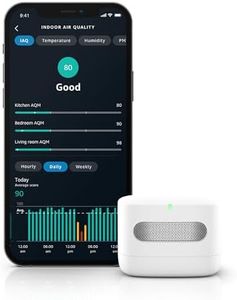
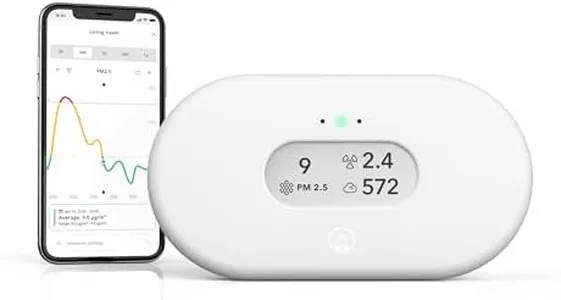
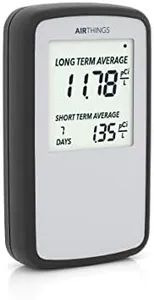
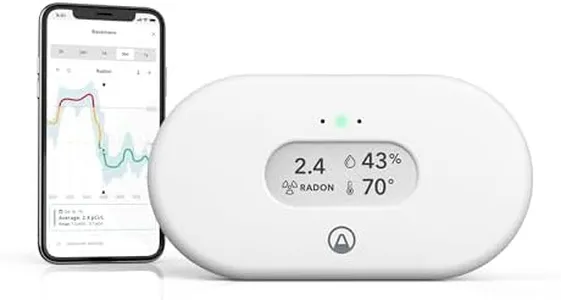
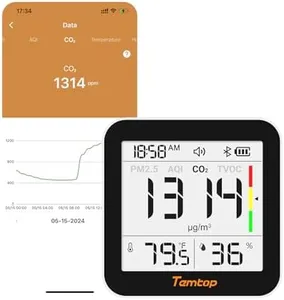
![Necto Cellular Temperature & Humidity Monitor - [4G LTE] No Monthly Fees - Power Outage and Temp Sensor with App Alerts, Remote Monitoring for RV, Pet, Home, Greenhouse & Server Room](https://images-proxy.bestreviews.guide/H-1K6-eT-W48Cw12K0_gnSjypVw=/0x300/https://m.media-amazon.com/images/I/41CzSJXIyVL._AC_CX679_.jpg)
